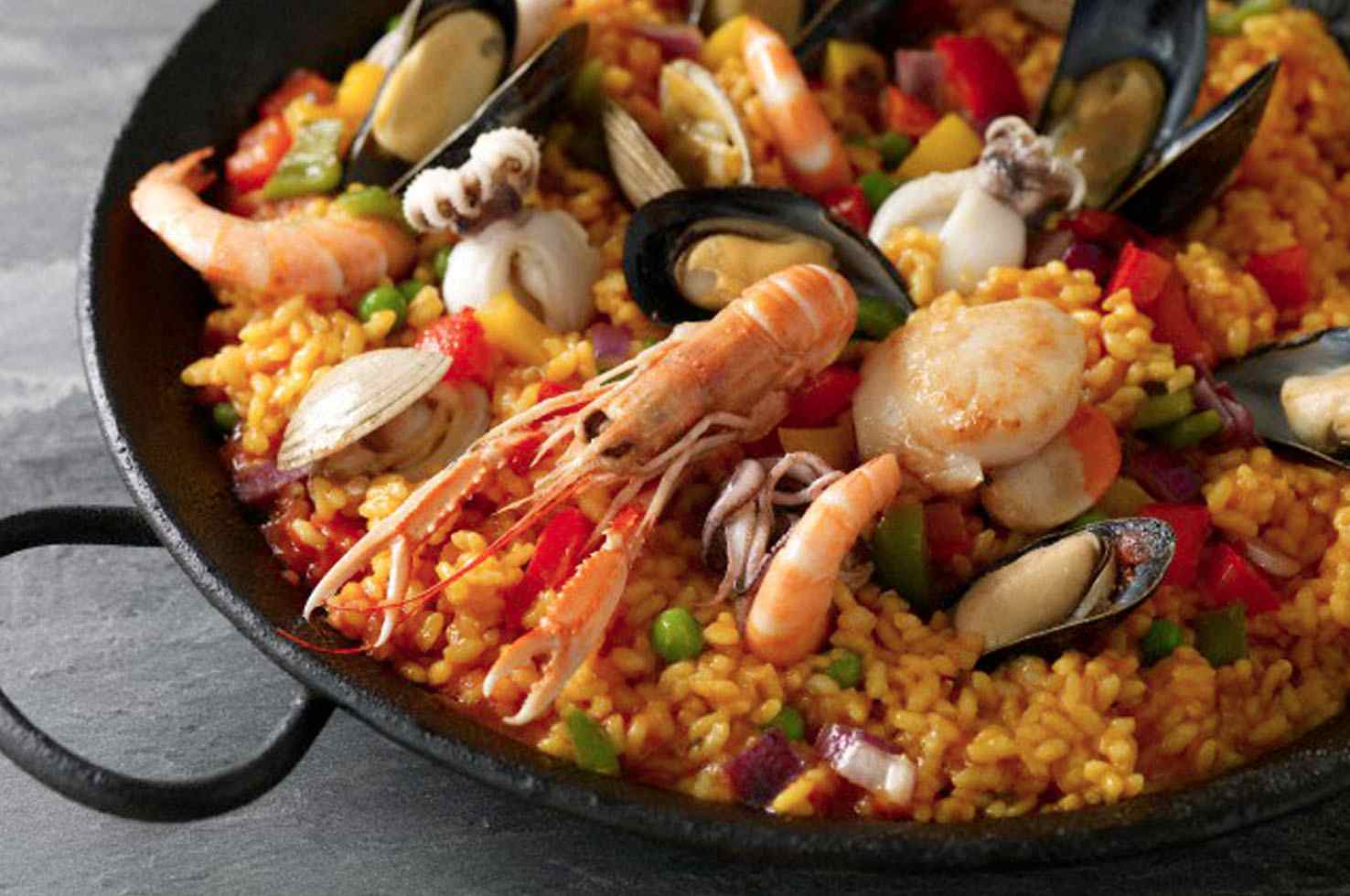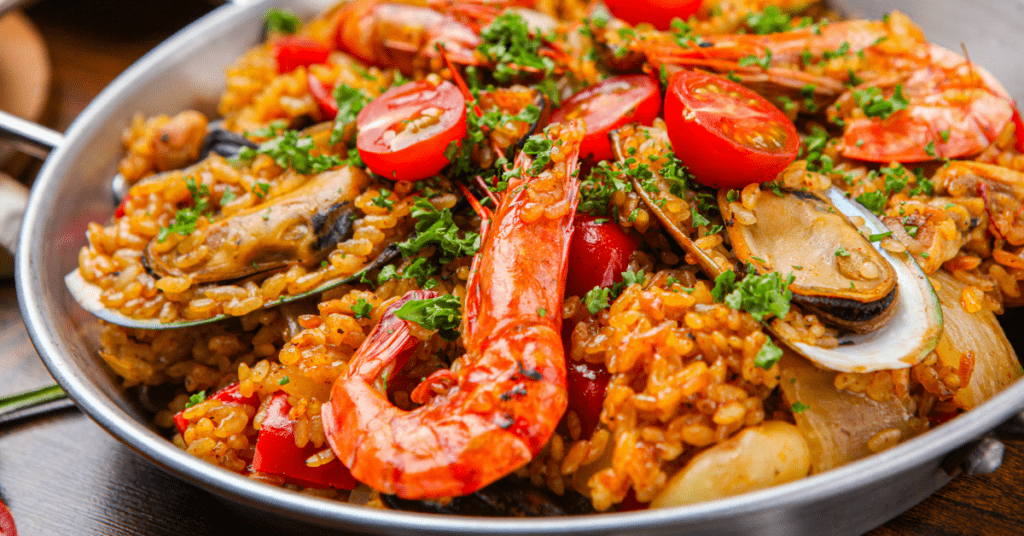Embark on a tantalizing culinary journey with our complete information to the perfect Spanish meals. From the colourful flavors of Andalusia to the revolutionary creations of contemporary gastronomy, this exploration will captivate your style buds and immerse you within the wealthy culinary heritage of Spain.
Put together to savor conventional dishes which have stood the check of time, reminiscent of the enduring paella and the refreshing gazpacho. Delve into the evolution of Spanish delicacies, the place cooks seamlessly mix custom with innovation, creating culinary masterpieces that tantalize the senses.
Regional Spanish Delicacies

Spanish delicacies is famend for its variety and regional variations. Every area of Spain boasts a definite culinary id, influenced by native elements, cooking methods, and cultural traditions.
Probably the most well-known regional cuisines is that of the Basque Nation in northern Spain. Basque delicacies is thought for its use of contemporary, native elements, reminiscent of seafood, greens, and meats. Basque cooks usually make use of easy cooking methods, reminiscent of grilling and roasting, to spotlight the pure flavors of their elements.
Catalan Delicacies
Catalan delicacies, from the area of Catalonia in northeastern Spain, is influenced by each Spanish and French culinary traditions. Catalan dishes usually characteristic a mixture of contemporary seafood, meats, and greens. Probably the most well-known Catalan dishes is paella, a rice dish cooked with seafood, meats, and greens.
Andalusian Delicacies
Andalusian delicacies, from the area of Andalusia in southern Spain, is thought for its use of spices and herbs. Andalusian dishes usually characteristic a mixture of contemporary seafood, meats, and greens. Probably the most well-known Andalusian dishes is gazpacho, a chilly tomato soup.
Conventional Spanish Dishes: Greatest Spanish Meals

Spanish delicacies is famend for its vibrant flavors, contemporary elements, and numerous regional specialties. Conventional Spanish dishes showcase the nation’s wealthy culinary heritage, providing a tasty array of flavors and textures.
The next desk categorizes and describes among the hottest conventional Spanish dishes, highlighting their area of origin, key elements, and preparation strategies:
Well-liked Conventional Spanish Dishes
| Dish Title | Area of Origin | Key Elements | Preparation Strategies |
|---|---|---|---|
| Paella | Valencia | Rice, seafood, meat, greens | Sautéed in a big, shallow pan |
| Gazpacho | Andalusia | Tomatoes, cucumbers, peppers, garlic, olive oil | Blended and served chilled as a soup |
| Tortilla de Patatas | Nationwide | Potatoes, eggs, onions | Fried in a skillet till golden brown |
| Cocido Madrileño | Madrid | Chickpeas, meat, greens, broth | Stewed in a clay pot |
Fashionable Spanish Gastronomy

In latest a long time, Spanish delicacies has undergone a exceptional evolution, with cooks pushing the boundaries of conventional flavors and incorporating revolutionary methods and elements.
Spanish cooks are famend for his or her potential to protect the essence of conventional dishes whereas experimenting with new culinary potentialities. They’re utilizing molecular gastronomy methods, reminiscent of spherification and sous vide cooking, to create dishes which might be each visually beautiful and bursting with taste.
Fashionable Spanish Eating places and Famend Cooks
A number of the most famed trendy Spanish eating places embrace:
- El Celler de Can Roca (Girona): A 3-Michelin-starred restaurant recognized for its revolutionary tasting menus that showcase the newest culinary methods.
- Mugaritz (Errenteria): One other three-Michelin-starred restaurant that’s well-known for its experimental dishes and its deal with sustainability.
- Arzak (San Sebastián): A two-Michelin-starred restaurant that has been on the forefront of contemporary Spanish delicacies for over three a long time.
These eating places, and lots of others like them, are serving to to form the way forward for Spanish gastronomy, showcasing the nation’s wealthy culinary heritage whereas embracing new and revolutionary approaches to cooking.
Spanish Elements and Flavors
Spanish delicacies is famend for its vibrant flavors and numerous elements. These parts mix to create a culinary expertise that’s each distinctive and fascinating.
On the coronary heart of Spanish cooking lies a basis of important elements that outline its character. These embrace olive oil, saffron, paprika, garlic, tomatoes, and onions.
Olive Oil, Greatest spanish meals
Olive oil is a cornerstone of Spanish delicacies, used extensively for cooking, dressing, and preserving. Its wealthy, fruity taste provides depth and complexity to dishes. Spain is the world’s main producer of olive oil, with areas like Andalusia and Catalonia boasting centuries-old olive groves.
Saffron
Saffron, a vibrant spice derived from the stigmas of the saffron crocus, is very prized in Spanish cooking. Its distinctive earthy, floral taste and golden-yellow hue are used to reinforce paellas, stews, and desserts.
Paprika
Paprika, comprised of floor dried peppers, is one other important Spanish ingredient. It provides a vibrant pink coloration and a barely smoky, candy taste to dishes. Paprika is utilized in a variety of preparations, from chorizo sausage to seafood stews.
Spanish Meals Tradition
Meals holds a central place in Spanish society and tradition, deeply intertwined with traditions, social interactions, and regional identities. It transcends mere sustenance, turning into an integral a part of each day life and a supply of nationwide satisfaction.
Communal eating is very valued in Spain, with meals serving as events for household, associates, and communities to collect and join. Tapas tradition, the place small plates of assorted dishes are shared, fosters a convivial environment and encourages dialog. Regional meals festivals showcase native culinary traditions, celebrating the variety and richness of Spanish delicacies.
Cultural Significance Past Culinary Features
Spanish delicacies holds cultural significance past its culinary delights. It displays the nation’s historical past, geography, and social customs. Conventional dishes usually carry tales of cultural change and influences from totally different areas and civilizations. Meals additionally performs a task in spiritual and festive celebrations, with particular dishes ready for particular events.
Spanish Meals and Wine Pairings
The culinary panorama of Spain is famend for its vibrant flavors and numerous regional cuisines. Spanish wines, equally celebrated for his or her complexity and character, provide an beautiful complement to the nation’s gastronomy. This pairing custom, deeply rooted in Spanish tradition, has advanced over centuries, leading to traditional mixtures that improve the enjoyment of each meals and wine.
Pairing Concerns
When pairing Spanish meals with wine, a number of components needs to be thought-about:
- Depth and Weight:The depth of the dish’s flavors needs to be matched with the physique and construction of the wine. Richer dishes, reminiscent of stews and grilled meats, pair nicely with full-bodied wines, whereas lighter dishes, like salads and seafood, complement lighter wines.
- Taste Profile:The flavors within the dish ought to complement and improve these of the wine. For instance, dishes with acidic flavors, reminiscent of ceviche or gazpacho, pair nicely with wines with excessive acidity.
- Regionality:Conventional Spanish pairings usually contain wines from the identical area because the dish. This method ensures that the flavors of each the meals and wine have developed in concord with one another.
Traditional Pairings
Listed below are some traditional Spanish meals and wine pairings:
| Dish | Wine |
|---|---|
| Paella | Rioja or Albariño |
| Jamón ibérico | Sherry |
| Tortilla de patatas | Tempranillo or Verdejo |
| Gazpacho | Manzanilla or Fino |
| Churros | Chocolate or candy wine |
Generally Requested Questions
What are some standard conventional Spanish dishes?
Paella, gazpacho, tortilla de patatas, croquetas, churros
How has Spanish delicacies advanced lately?
Cooks are incorporating revolutionary methods and elements whereas preserving conventional flavors, creating a contemporary and complex culinary scene.
What are some important elements in Spanish delicacies?
Olive oil, saffron, paprika, garlic, tomatoes, seafood


:max_bytes(150000):strip_icc()/GettyImages-107814936-56a58b813df78cf77288bd7b.jpg?resize=600&w=600&ssl=1)